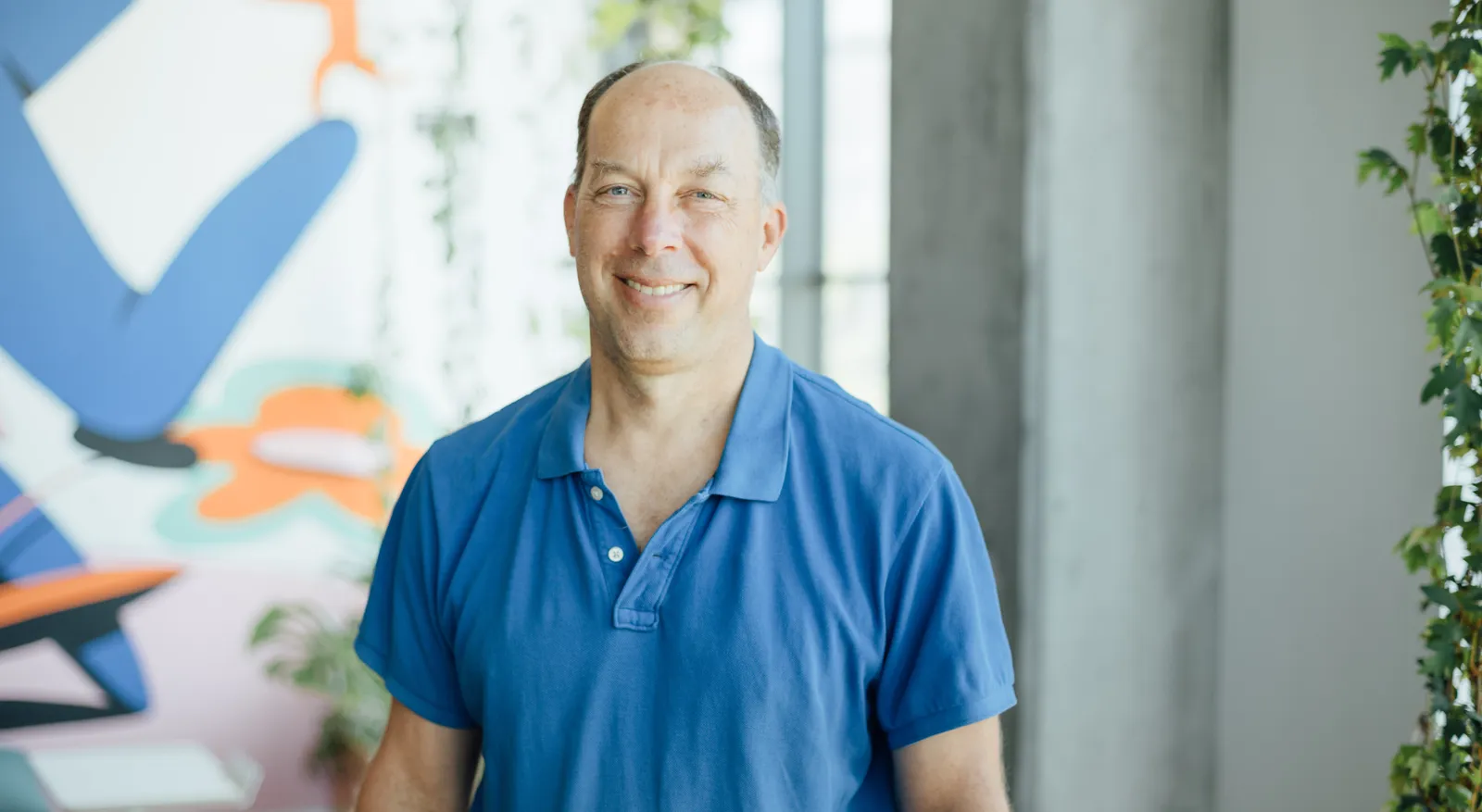Steve Quake is regarded as one of the world’s most prolific inventors, and each of his best ideas was born from a different scenario. But they all have something in common: They happened when Quake was away from the ordinary tasks of daily life, and often, right on the edge of discomfort.
Perhaps that discomfort was worry, boredom or the exciting spark of diving into an unfamiliar field. Perhaps it was jetlag and the “little bit dissociated state” that comes with the liminal space of travel. But each time, his mind wandered to someplace it didn’t usually go, and that has made all the difference.
As head of science for the Chan Zuckerberg Initiative (CZI), the philanthropic organization established and owned by Facebook (now named Meta) founder Mark Zuckerberg and his wife, Dr. Priscilla Chan, Quake’s job is innovation. He’s also the Lee Otterson Professor of Bioengineering and professor of applied physics at Stanford University and leads the eponymous Quake Lab there.
Quake says he doesn’t consciously cultivate innovation. Instead, he’s just “wired that way.” That’s why those of us who might need to work a little harder at it can look to a person like him — who’s had several “once-in-a-lifetime” ideas already— for advice and inspiration.

We asked Quake about the ways he comes up with ideas, what his daily routine is like and what he’s learned on the path to becoming one of the world’s most successful inventors and innovators in the life sciences field.
Embrace boredom and let your mind wander
Quake runs or bikes every morning, but he doesn’t listen to music while he does it. Instead, he lets his mind wander. That approach, which he calls a kind of mind-freeing boredom, has served his creativity well.
“Boredom is underrated … a lot of good stuff comes out of that,” he said. “It's when you're bored that the mind is free.”
For instance, the idea for single-molecule human genome sequencing was what he called “a shower idea.”
“It was a long shower and a productive one that sent me off on years of research,” he said.
Jump into the unknown
Quake’s idea for microfluidics resulted from diving into a field where he had an interest but no training. His postdoc officemate knew the area, though, and they talked about it all the time.
“What you bring is your own creativity and an outsider's perspective, and sometimes that's the best way to innovate.”

Steve Quake
Head of science, Chan Zuckerberg Initiative
“We used to sneak into the lab facility on weekends,” Quake said. “He was showing me how to microfabricate things.”
By collaborating with someone who could teach him, he was able to embrace risk, learn something new and bring a fresh point of view.
“It's okay to jump in areas where you're not an expert, [where] you don't know things. Because you can learn, read. You talk to people. You become an expert,” he said. “What you bring is your own creativity and an outsider's perspective, and sometimes that's the best way to innovate.”
Draw from the problems in your life
Some of Quake’s best ideas came from personal experience, and a significant one was the blood test he invented to replace amniocentesis.
His wife needed the invasive procedure when she was pregnant with their first child. At first, Quake thought they were having a “kind of theoretical” conversation about needing amniocentesis. But then, the doctor “turned around with a giant needle in his hand.”
Quake thought there should be a better way and came up with one. That personal experience resulted in a simple blood test that about 8 million people per year now receive to determine the same results as the invasive amniocentesis procedure.
Raise the bar for yourself
Quake doesn’t worry that every great idea will be his last.
“It's quite the opposite. It raises the bar,” he said.
Realizing that kind of impact — such as knowing how many women a year get a test that he invented — “sets the bar for what you want to do next.”
“That’s, frankly, part of the reason why I took the job at CZI,” he added. “Because it was an opportunity to do something on an incredible scale that helps science. We can set a very high bar for what we want to do.”











